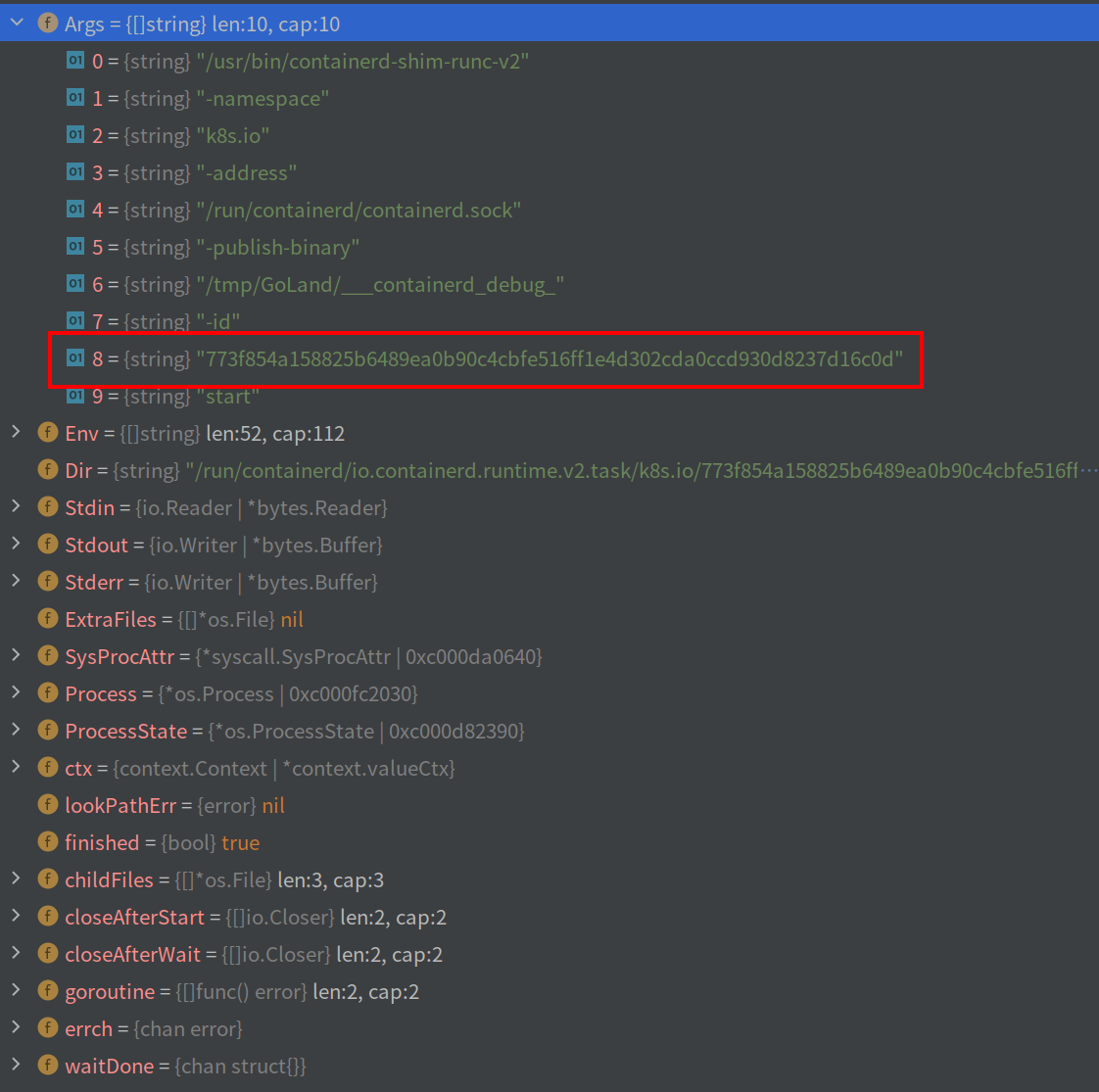1
2
3
4
5
6
7
8
9
10
11
12
13
14
15
16
17
18
19
20
21
22
23
24
25
26
27
28
29
30
31
32
33
34
35
36
37
38
39
40
41
42
43
44
45
46
47
48
49
50
51
52
53
54
55
56
57
58
59
60
61
62
63
64
65
66
67
68
69
70
71
72
73
74
75
76
77
78
79
80
81
82
83
84
85
86
87
88
89
90
91
92
93
94
95
96
97
98
99
100
101
102
103
104
105
106
107
108
109
110
111
112
113
114
115
116
117
118
119
120
121
122
123
124
125
126
127
128
129
130
131
132
133
134
135
136
137
138
139
140
141
142
143
144
145
146
147
148
149
150
151
152
153
154
155
156
157
158
159
160
161
162
163
164
165
166
167
168
169
170
171
172
173
174
175
176
177
178
179
180
181
182
183
184
185
186
187
188
189
190
191
192
193
194
195
196
197
198
199
200
201
202
203
204
205
206
207
208
209
210
211
212
213
214
215
216
217
218
219
220
221
222
223
224
225
226
227
228
229
230
231
|
func run(ctx context.Context, manager Manager, initFunc Init, name string, config Config) error {
parseFlags()
if versionFlag {
fmt.Printf("%s:\n", filepath.Base(os.Args[0]))
fmt.Println(" Version: ", version.Version)
fmt.Println(" Revision:", version.Revision)
fmt.Println(" Go version:", version.GoVersion)
fmt.Println("")
return nil
}
if namespaceFlag == "" {
return fmt.Errorf("shim namespace cannot be empty")
}
setRuntime()
// 1, 接收系统信号
// smp := []os.Signal{unix.SIGTERM, unix.SIGINT, unix.SIGPIPE}
// smp = append(smp, unix.SIGCHLD)
signals, err := setupSignals(config)
if err != nil {
return err
}
// prctl(PR_SET_CHILD_SUBREAPER,1)
// 让当前进程像init进程一样来收养孤儿进程,称为subreaper进程
// 孤儿进程成会被祖先中距离最近的 supreaper 进程收养
if !config.NoSubreaper {
if err := subreaper(); err != nil {
return err
}
}
ttrpcAddress := os.Getenv(ttrpcAddressEnv)
publisher, err := NewPublisher(ttrpcAddress)
if err != nil {
return err
}
defer publisher.Close()
ctx = namespaces.WithNamespace(ctx, namespaceFlag)
ctx = context.WithValue(ctx, OptsKey{}, Opts{BundlePath: bundlePath, Debug: debugFlag})
ctx, sd := shutdown.WithShutdown(ctx)
defer sd.Shutdown()
// 初始化manager
// 这里的manager并不为nil
if manager == nil {
service, err := initFunc(ctx, id, publisher, sd.Shutdown)
if err != nil {
return err
}
plugin.Register(&plugin.Registration{
Type: plugin.TTRPCPlugin,
ID: "task",
Requires: []plugin.Type{
plugin.EventPlugin,
},
InitFn: func(ic *plugin.InitContext) (interface{}, error) {
return taskService{service}, nil
},
})
manager = shimToManager{
shim: service,
name: name,
}
}
// Handle explicit actions
switch action {
case "delete":
logger := log.G(ctx).WithFields(logrus.Fields{
"pid": os.Getpid(),
"namespace": namespaceFlag,
})
go reap(ctx, logger, signals)
ss, err := manager.Stop(ctx, id)
if err != nil {
return err
}
data, err := proto.Marshal(&shimapi.DeleteResponse{
Pid: uint32(ss.Pid),
ExitStatus: uint32(ss.ExitStatus),
ExitedAt: protobuf.ToTimestamp(ss.ExitedAt),
})
if err != nil {
return err
}
if _, err := os.Stdout.Write(data); err != nil {
return err
}
return nil
case "start":
opts := StartOpts{
ContainerdBinary: containerdBinaryFlag,
Address: addressFlag,
TTRPCAddress: ttrpcAddress,
Debug: debugFlag,
}
// 启动 shim server,并返回 sock address
address, err := manager.Start(ctx, id, opts)
if err != nil {
return err
}
if _, err := os.Stdout.WriteString(address); err != nil {
return err
}
return nil
}
if !config.NoSetupLogger {
ctx, err = setLogger(ctx, id)
if err != nil {
return err
}
}
plugin.Register(&plugin.Registration{
Type: plugin.InternalPlugin,
ID: "shutdown",
InitFn: func(ic *plugin.InitContext) (interface{}, error) {
return sd, nil
},
})
// Register event plugin
plugin.Register(&plugin.Registration{
Type: plugin.EventPlugin,
ID: "publisher",
InitFn: func(ic *plugin.InitContext) (interface{}, error) {
return publisher, nil
},
})
var (
initialized = plugin.NewPluginSet()
ttrpcServices = []ttrpcService{}
ttrpcUnaryInterceptors = []ttrpc.UnaryServerInterceptor{}
)
plugins := plugin.Graph(func(*plugin.Registration) bool { return false })
for _, p := range plugins {
id := p.URI()
log.G(ctx).WithField("type", p.Type).Infof("loading plugin %q...", id)
initContext := plugin.NewContext(
ctx,
p,
initialized,
// NOTE: Root is empty since the shim does not support persistent storage,
// shim plugins should make use state directory for writing files to disk.
// The state directory will be destroyed when the shim if cleaned up or
// on reboot
"",
bundlePath,
)
initContext.Address = addressFlag
initContext.TTRPCAddress = ttrpcAddress
// load the plugin specific configuration if it is provided
//TODO: Read configuration passed into shim, or from state directory?
//if p.Config != nil {
// pc, err := config.Decode(p)
// if err != nil {
// return nil, err
// }
// initContext.Config = pc
//}
result := p.Init(initContext)
if err := initialized.Add(result); err != nil {
return fmt.Errorf("could not add plugin result to plugin set: %w", err)
}
instance, err := result.Instance()
if err != nil {
if plugin.IsSkipPlugin(err) {
log.G(ctx).WithError(err).WithField("type", p.Type).Infof("skip loading plugin %q...", id)
continue
}
return fmt.Errorf("failed to load plugin %s: %w", id, err)
}
if src, ok := instance.(ttrpcService); ok {
logrus.WithField("id", id).Debug("registering ttrpc service")
ttrpcServices = append(ttrpcServices, src)
}
if src, ok := instance.(ttrpcServerOptioner); ok {
ttrpcUnaryInterceptors = append(ttrpcUnaryInterceptors, src.UnaryInterceptor())
}
}
if len(ttrpcServices) == 0 {
return fmt.Errorf("required that ttrpc service")
}
unaryInterceptor := chainUnaryServerInterceptors(ttrpcUnaryInterceptors...)
server, err := newServer(ttrpc.WithUnaryServerInterceptor(unaryInterceptor))
if err != nil {
return fmt.Errorf("failed creating server: %w", err)
}
for _, srv := range ttrpcServices {
if err := srv.RegisterTTRPC(server); err != nil {
return fmt.Errorf("failed to register service: %w", err)
}
}
if err := serve(ctx, server, signals, sd.Shutdown); err != nil {
if err != shutdown.ErrShutdown {
return err
}
}
// NOTE: If the shim server is down(like oom killer), the address
// socket might be leaking.
if address, err := ReadAddress("address"); err == nil {
_ = RemoveSocket(address)
}
select {
case <-publisher.Done():
return nil
case <-time.After(5 * time.Second):
return errors.New("publisher not closed")
}
}
|



